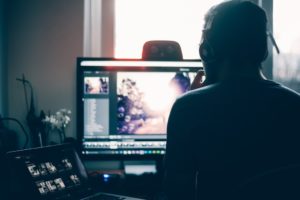Learning how to effectively market your music is a skill all artiste should have. With the many social media channels, using it effectively can help you as a n artist promote yourself in at an affordable cost. But your music isn’t the only thing that you can use to promote yourself.
Here’s the thing. There’s a practice that I see many artiste do online. Especially when they have a new song promoting. Every chance they get they post their music. They will send you a message every day with the same song. Not to mention post the song under other people’s post as a reply.
For example I will post a flyer about an upcoming event. An artiste comments on the flyer with a link to their song on YouTube.
Another example I will get a DM on Instagram from an artiste. When I check the message its a link to YouTube with a request to listen their new song. I have even seen people post a song on someone’s Facebook profile on their birthday.
When I see it done I ask myself the question is it very effective? Are they building a following on social media by doing it? Or are they turning people away?
Here are 5 reasons why having more than music is a good way to build a loyal following online.
1. It broadens your reach
The first place where most artiste look to promote their songs is radio. Especially radio shows that they know play their kind of music. They also target entrainment blogs, newspapers and magazines for reviews.
Then they apply the same concept online. On social media they post the song every chance they get. But they fail to move beyond the music.
Doing this can shift the focus off the music and more on the message. Focusing on the message can open up new audiences for you to promote yourself.
For example, reggae artist Spice released a song about the color of her skin and if she was lighter things might be better. What she did to promote the song I think was genius. She deleted all her Instagram pictures and posted only one. The picture was her with a lighter skin color.
The result was that everybody was talking about it. They even thought that Spice changed her skin color. It was believable. But later she revealed that she is promoting a new song. The campaign brought the message to the front and center.
2. Introduce your fans to things you are interested in
Beyond the music you must like other things. Like sports, art, books, clothes. Your fans might have similar interest to you as well. You can use your social media channels to talk about them and share a bit with your fans. What this does is move the conversation beyond just music and make your brand more interesting.
As a music fan, I always research my favorite artist. I want to find interviews with them talking about their story. How they grew up, what they like. What other music they listen to. What books they read. The type of movies they like to watch.
If you can talk about these things it can help you engage with your fans.
3. Give you more things to talk about on your blog in between releases
Having something to share with your fans is a good thing. After you have released a new song what else can you talk about? That’s the question you should always seek to answer. How can I keep my fans engaged and let them appreciate the song more?
That’s the next step. Focusing on the message of the song, the process, and more will give you more ideas for content. You can share bits and pieces overtime. You wont suffer from mental blocks because you will always have something to say.
4. Makes you seem human
If all you post is your song then after awhile people will start to tune you out. Beyond the music what else is there about you that can build your relationship with your fans.
When you share your interest it makes you more relatable. Fans will understand who you are and get to know you a bit better. These people will become hardcore fans.
For example many artiste struggle with certain issues but never talk about them. Fans who suffer from the same issue can benefit from you sharing your story and how you found a solution.
When Linkin Park frontman Chester Bannington committed suicide, there were a number of fans expressing how their music helped them through difficult times. Your music will have a similar impact and that’s why its important to move beyond the music.
5 It helps you connect with your fans more
The last reason is it helps you connect with your fans. You can engage with them in a more meaningful way through the stories you share. The experiences you have and the solutions you find to common problems.
What you share can be anything. It could be your faith, your favorite food, your hobbies outside of music. Your fans will appreciate you for doing it. When you share consistently it will build a momentum and give people more reasons to follow you besides your music.
Conclusion
The point i’m trying to make is this, share a little bit more about who you are. Become content creators online and give people a reason to come back for more. Music is just one option. The question is what else is there?
What are some of the ways you use to engage your fans between releases? leave a comment below.



